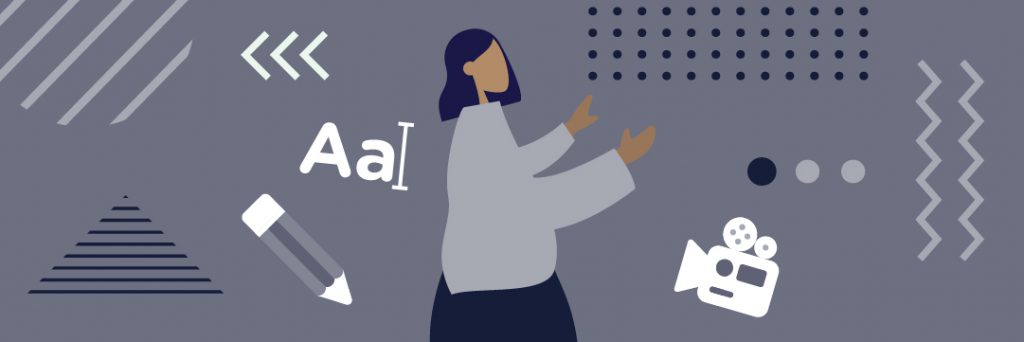Gone are the days when you needed to bombard people with slideshows, photos, and unending text for them to digest your content. Now is the era of video content. One of the best things about educational videos is that it allows students to interact more with information. Therefore, they can acquire knowledge in a more effective way. This is why you need to know about educational video production and how it can benefit your brand.
In recent years, professors and organizations have been using more enriching mediums to share content with learners. Video-based learning is a prime example of an interactive and creative way to showcase information since it enables people to interact, digest, and explore content more effectively. If you are thinking of getting started in educational video production, it is important to dive into the ins and outs of this career choice.
Educational Video Production Stages You Should Know
In recent years, there has been an increase in online educators who want to incorporate videos in their educational content, whether it’s in e-learning or in a company setting – and for good reason. When these videos are made well, it will not only inform but also inspire learners.
If you’re in charge of educational video production, how can you ensure that the entire process is successful? This can be achieved if you are familiar with the four important phases of the video production process. The first step is scriptwriting. Next, you will deal with the pre-production aspects of your video. This is followed by the shooting of the video shooting, and the last phase is post-production.
We will look at each stage and include some useful tips for you to keep in mind during your next educational video production.
Scriptwriting
In this phase, you need to partner with a writer who has a background in writing scripts for video. The first thing you need to consider is the purpose of your video. Never start your script without knowing what you want to achieve or what goals and learning objectives you want to check off your list.
Next, define who your target audience is. Finding out the answer to this question will enable you to know what you want your viewers to do after watching your video, as well as what frustrates or motivates them. Additionally, knowing who your viewers are will also enable you to figure out what they already know about the subject and how you can effectively capture their attention.
You also need to properly outline your message during your scriptwriting process. Having a guide in your messaging will allow your viewers to digest information better.
After you’ve done all the things listed above, you can finally move on to writing the script. Keep editing your script until you are finally confident in its flow and wording. It is always a good idea to read your script aloud several times to know whether or not it feels natural. Keep in mind that it’s easier to edit during this process than to change it in post-production.
Pre-production
The people that will be part of your production have three primary responsibilities in this phase. The first is to add notes to the script. This part would determine where to show the graphics done by a designer and when to cut, among other things.
In the pre-production phase, you will also prepare all the needed equipment that needs to be used in the shoot. This includes the set design, teleprompter, professional lighting, cameras, background, microphones, and even the snacks for the talents if you have any.
It generally takes one or two days to set-up and test all the equipment before the shoot happens. This is also the time when those in charge of the video need to figure out the best way to capture light and audio for your video.
Video shoot
The crew that is in charge of shooting usually takes one to two days to complete everything that is required, depending on how long your video is.
Before the shoot, it is important for all the talents to practice reading the script beforehand. They should pay attention to their body language, voice inflections, and gestures so they can make adjustments when needed.
If the people in your video plan to walk or move during the video, the production crew must know where they will go. This way, they can place markers to let the talents know where to position themselves well. Next, it is vital to pick the right outfit that will complement all the colors of your background or set. If you do not have a makeup team ready, it is recommended to have blotting tissues or powder to decrease the shine on the faces of people in your video. It is important that the people in your video are confident enough in your script and follow your prompter’s script.

Post-production
This is the final stage of your educational video production. Here, your video is finalized. You may need to have an animation designer or a talented video editor on your team to make sure your educational video is entertaining.
Tips to Keep in Mind When Making Educational Videos
Consider these tips if you want to make educational videos that your viewers will love.
Keep it short
Even if you have many concepts you have to get across, it is recommended to keep your videos short. Viewers will tend to get bored or lose interest in your content if it is too long. Unless you have a very interactive video, keep it centered on only one concept. Videos that are less than five minutes long will make grasping information easier.
Make videos interactive
If you don’t have any option but to make a longer video, at least make it interactive. Ask your learners or audience for feedback, and repeat your concepts through quick summaries. Another way to make your video more interactive is to insert some quizzes. If you want to take the extra mile, ask your learners what they want to see.
Have a transcript ready
Do not assume that all your viewers will have high-quality headphones at their disposal. It is vital to provide subtitles through the help of a transcriptionist to make the video easier to follow. If you want to release the video in other countries, consider hiring a translator.
Make the file size small
Your audiences would not appreciate it if your video takes forever to load. Instead, this will only lead to frustration. Create a version for low bandwidth playing and use compressors to reduce your video file size.
Use scenarios
Videos are an amazing way to create immersive scenarios that can make audiences understand hard concepts more.
Benefits of Using Educational Videos
The entire educational video production process is hard, but it’s worth it. We’ve rounded up some of the important benefits of using educational videos.
It can improve problem-solving and thinking
Using educational videos to communicate concepts and ideas will make the learning experience more insightful. A video consists of moving text, sound, and images, so when someone is watching it, they are engaged in multi-sensory learning.
When people use multiple senses to understand concepts, it will give them more opportunities for cognitive connection. This will facilitate a deep understanding of hard concepts from various perspectives. In the process, they will also be acquiring problem-solving skills that are important for improved performance.
It will help you to show, not tell
Videos can be used to show procedures that are needed to intensify learning. If the e-learning material is procedural like product training, videos would be an awesome way to present procedures comprehensively. For instance, educational videos can be an effective way to demonstrate mechanical or clinical processes. It can also be used to repeat information that was initially explained through words.
It is great for visual learners
Everyone learns differently. There are auditory learners whose preferred way of learning is listening. There are also kinesthetic learners who love doing activities, and there are visual learners who understand and remember information better when it is presented through videos or images. As should be expected, educational videos are ideal for visual learners.
It will allow you to use animation to convey complicated information
Videos don’t always have to be composed of real-life videos. It is okay to use animated avatars, whiteboard animation, or other works of video graphic designers if you need to explain hard concepts. These types of videos are very engaging and modern, especially for online learners. Having videos with multiple styles will also add more depth to your output.
It is accessible
Videos are made to be accessible on all kinds of devices with various internet speeds as long as it is kept light. Multi-device compatibility will allow your viewers to access your videos easily through their laptop, phone, or desktop, whether they are in their home, office, or even their daily commute.
It will reduce training cost
It is now possible to commission people to make interactive educational videos and have them released in no time, without spending too much money in the process. Think about it – it would take a lot of money to rent space to conduct workshops or hire trainers. When you have a video, you will only have to invest your hard-earned dollars only once.
Delivering your videos to your audience has also become more efficient than ever since most people now own a laptop or phone. Your educational video can be easily distributed without much effort, and people can access it anytime and anywhere.
Are You Excited to Produce Your Own Educational Video?
More companies and educators are now leaning towards video as the best method for their learning strategy. Now that you know important elements that are part of educational video production, you can provide an improved layer of information and instruction to your audience. Soon, you can completely transform how people learn in the corporate or university setting by creating a richer experience for your learners and yourself.










